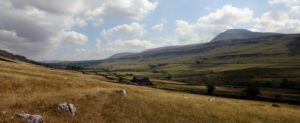Yorkshire Three Peaks Challenge
The Yorkshire Three Peaks have gained reputation among hikers and fell runners for the challenge and the reward they offer. Three of the highest summits in the Yorkshire Dales National Park, Ingleborough, Whernside and Pen-Y-Ghent surround the head of the River Ribble, creating the perfect circular route with stunning panoramic views.
Individually, each peak represents a considerable challenge, but to complete the circular route of 38.6km (24miles) including each of the three peaks under 12 hours is the challenge that has earned the Yorkshire Three Peaks their reputation. Although this is a popular route, the distance and the wilderness of the dales should not be underestimated. Visitors can take on the challenge at any time, and there are also regular group walks organised by Three Peaks Challenge, with mountain leaders to guide you along the way.

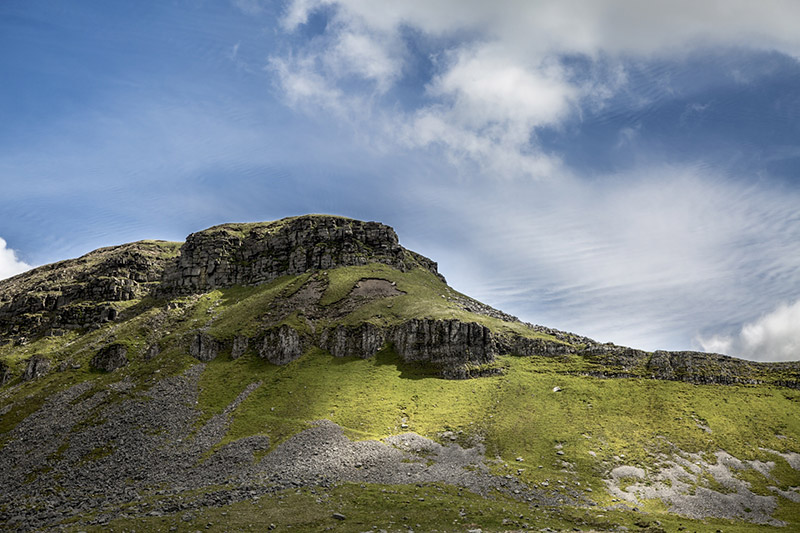
The first recorded ascent of all three peaks was by JR Wynne-Edwards and DR Smith in the time of 10 hours. The ‘National Three Peaks Challenge’ of Ben Nevis, Snowdon and Scafell Pike, may be a more renowned challenge today, topping the highest points in England, Wales and Scotland. But this is more of a logistical challenge, relying on good traffic and a reliable vehicle. The Yorkshire Three Peaks route, with a length roughly equivalent to a marathon, is a challenge for walking purists, and has been attempted since long before the advent of the automobile.
Throughout the lengthy walk, there are just two B-roads, a railway and a river to cross. Other than these brief interludes of civilisation, the route pits the walker against 1600m of elevation and the wilderness of the dales. Offering the perfect distance to complete in a single day, novice hikers may aim to complete the route in the recognised target of 12 hours. And while experienced hikers can be expected to cut this time down significantly, the distance remains a worthy challenge regardless. There is also a long history of fell running between the Yorkshire Three Peaks, with Jeff Norman setting the record for the fastest completion of the route in 1974 when he scaled the trio in just 2 hours 29 minutes and 53 seconds.

The route of the Yorkshire Three Peaks challenge is well established, and can be started from a number of different locations. The most common start/end point is from Horton-in Ribblesdale, where there is plenty of parking, refreshment opportunities in local pubs and cafes, and the only public toilets on the route. Chapel le Dale offers a quieter starting spot, with limited free parking, and finally, some walkers choose to start and finish in Ribblehead, close to the striking landmark of the Ribblehead Viaduct. The route can be walked either clockwise or anti-clockwise, and free print-outs of the route are available online. However, it is essential that groups taking on the challenge with no mountain leader bring an OS Explorer OL2 map, which covers the Yorkshire Dales and the route of the challenge.
Pen-Y-Ghent
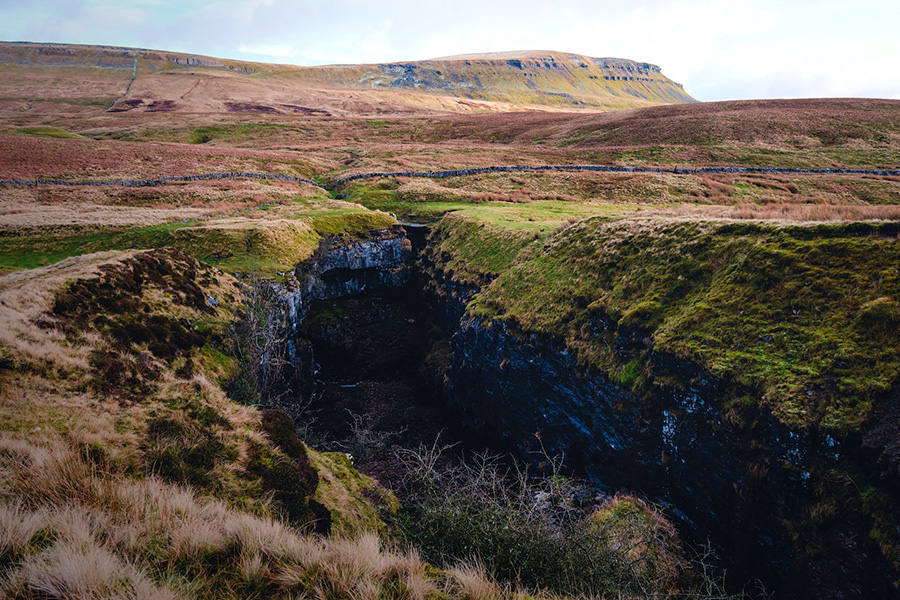
Starting from Horton-in-Ribblesdale, walking counter-clockwise, the first summit to climb is Pen-Y-Ghent (694m). The lowest of the three peaks, and less than five kilometres from the carpark, the ascent is nonetheless not to be underestimated. A steep climb quickly turns steeper as walkers approach the peak from the south-west, and a good bit of scrambling is required before the trig point comes into view. Rewarding panoramic views should lift walkers’ spirits, readying them for the long stretch up to Ribblehead and Whernside.
An interesting feature under Pen-Y-Ghent is Hull Pot, which is the remains of a cave where the “roof” has collapsed, leaving a giant chasm in the surrounding moorland underneath Pen-y-ghent. It’s the largest natural hole in England, measuring 300 ft long, 60 ft wide, and 60 ft deep.
Whernside
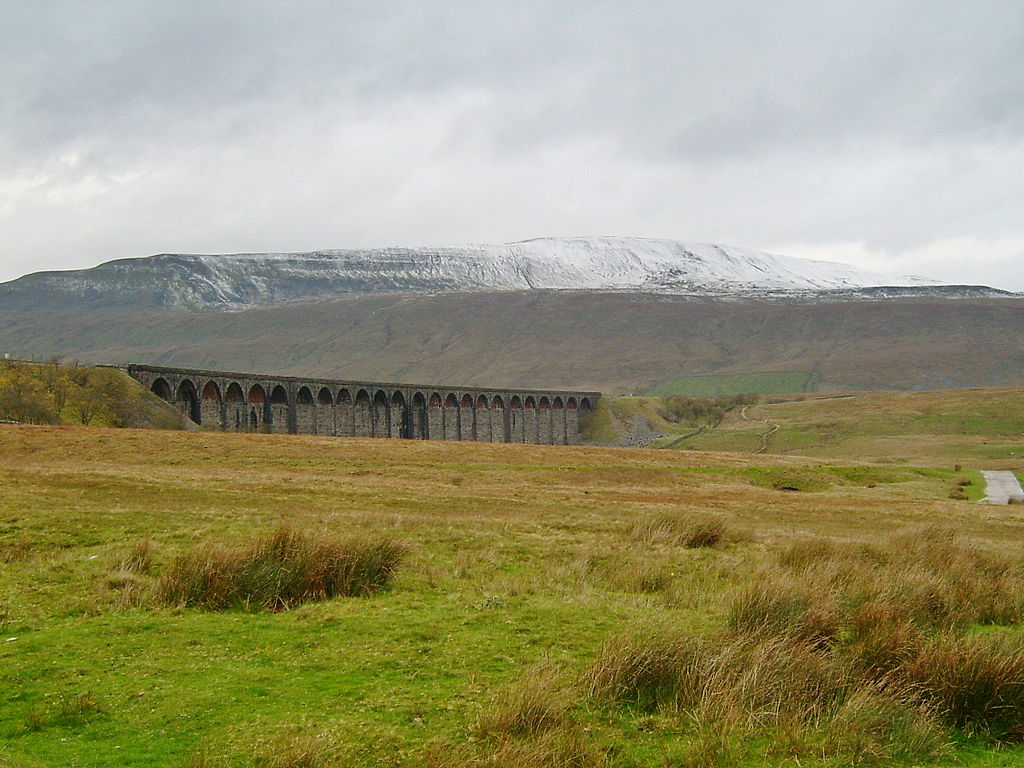
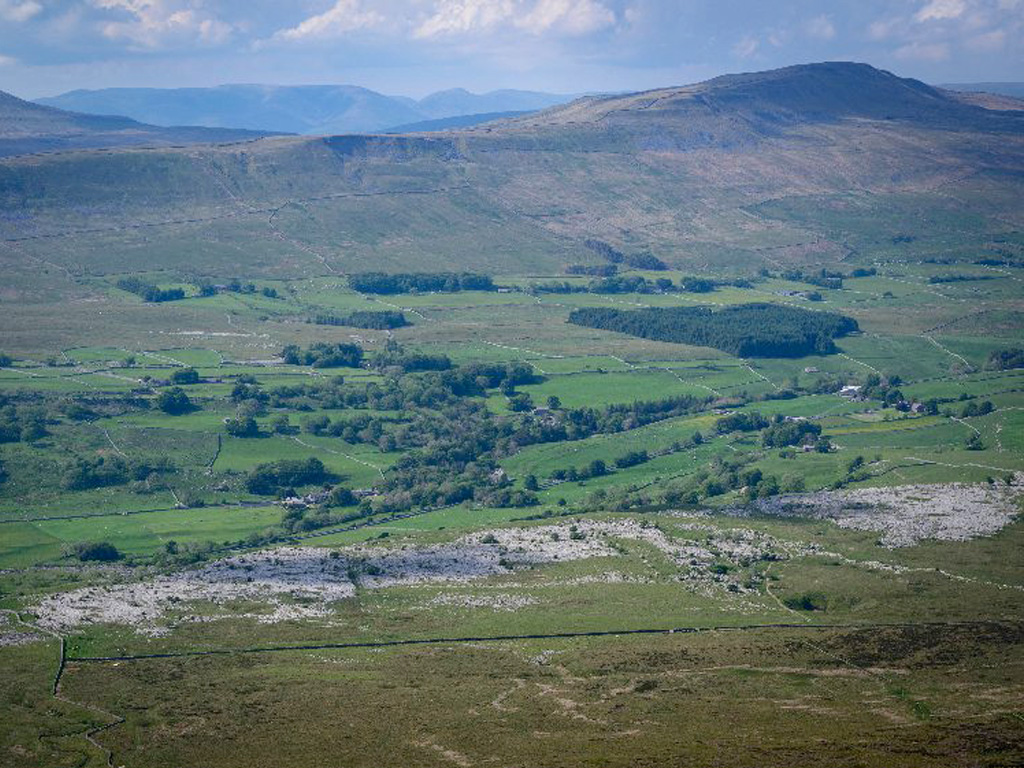
The walk from Pen-Y-Ghent to Whernside is the longest distance between two peaks on the route, and is likely to present an early mental challenge to novice walkers. Thankfully, the route means walkers are consistently surrounded by breath-taking views of the sweeping hills. Whernside (736m) is the highest point in Yorkshire (although the trig point at the peak is technically in Cumbria, the mountain itself is considered to be in Yorkshire). On the way towards Whernside, walkers pass by the iconic Ribblehead Viaduct, which has served trains on the Carlisle-Settle line since 1875. Although Whernside is clearly visible from the viaduct (weather dependent), there is still a good way to go before the summit, as the trail circles round to approach from the north by a more gradual and firmer path.
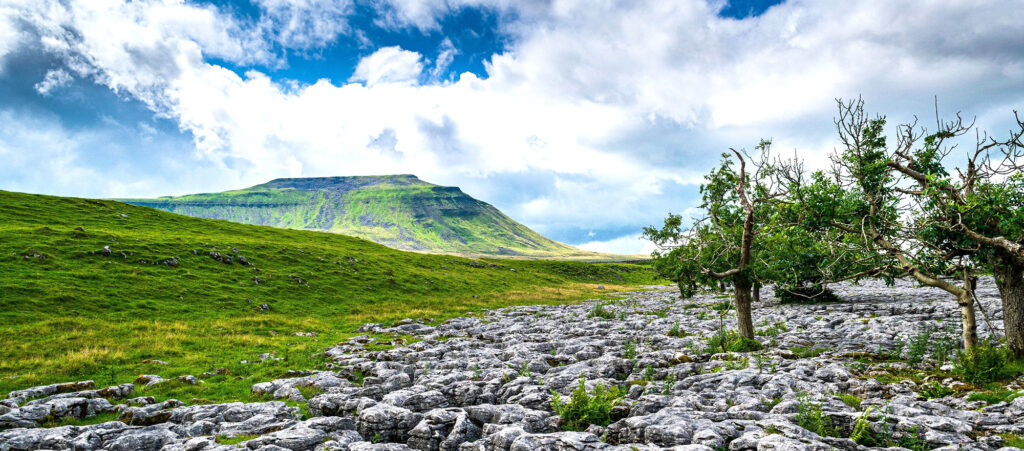
Ingleborough
After a well-deserved break, walkers can continue on down the Whernside ridge, making a steep descent down into the valley to Chapel le Dale. By far the most challenging aspect of the Yorkshire Three Peaks is the repeated ascent and descent. While each peak lies between 650-750m in elevation, the trail drops to less than 300m between each new ascent. By the time walkers approach the final summit of Ingleborough (723m), energy levels will undoubtedly be dropping, and it is even more important at this stage in the walk to remain conscious of navigation and the wellbeing of each walker in your group. The peak of Ingleborough is set back from the trail by around 200m and is marked by a cairn. After retracing the path back from the summit, the trail leads off to the right along the ridge, before you begin the final descent back to Horton-in-Ribblesdale.



Along the trail there is plenty to look out for. Although the landscape is primarily moorland and peaty bogs down in the valley, these habitats are crucial for the survival of many species of birds and insects. Avid botanists should keep their eyes peeled for the Birds Eye Primrose, Rigid Buckler Fern and Orchids, all of which can be spotted along the trail. Closer to the ground you might spy the tiny carnivorous Sundew, whose sticky feelers reach out for any insect life around nearby puddles and boggy areas. Rare visiting birds such as the Ring Ouzel and Curlew can be spotted along the Yorkshire Three Peaks route, alongside the more common Oyster Catcher, Black Grouse, Skylarks, Lapwings and Buzzards.
Safety Comes First
While experienced hikers may feel confident to turn up and set off with little preparation, safety must come first when tackling an outdoor challenge such as this. Firstly, having the right kit can be the difference between a successful walk and a dangerous failure. Walking boots with proper ankle support are essential, as well as breathable walking clothes and a fleece in case it gets cold. Personal backpacks should hold full waterproofs, spare socks, gloves and hat, headtorch, any personal medication, as well as snacks and at least 2L of water. You can fill up water in Ribblehead and Horton-in-Ribblesdale. Groups are also recommended to carry safety equipment such as a first aid kit, emergency shelter, and safety blanket.
Secondly, having an OS map, compass, and someone who is confident using them is essential. While the trail is well worn and hard to miss, the weather in the dales can change rapidly, and it is essential that your group is able to find it’s way in low visibility conditions, or if it begins to get dark. Finally, it is essential that all hikers in the group are aware of their own capabilities before tackling this challenge. Have contingency plans in place, should you be unable to finish the entire route, and make sure that you always have plenty enough water and nutrition to last you the day.

The trails which cater to the Yorkshire Three Peaks challenge, as well as those that cross, intersect and merge with it, are all maintained by the Yorkshire Dales National Park Authority. With thousands of visitors every year, and limited funding, the management of these paths and the surrounding area is a tough job. In 1987, the Institute of Terrestrial Ecology described the paths on the Yorkshire Three Peaks route as the most severely eroded in the UK. While the landscape remains fragile, the Three Peaks Project, set up in 2009, aims to conserve and maintain the area in the long term by providing sustainable income to fund the maintenance teams. By adhering to the Yorkshire Dales code of conduct, you can help to preserve the natural beauty of the area. Stick to the path to avoid unnecessary erosion, stay well clear of any wildlife, be considerate if you need the toilet when out on the dales, and carry all your litter home.
